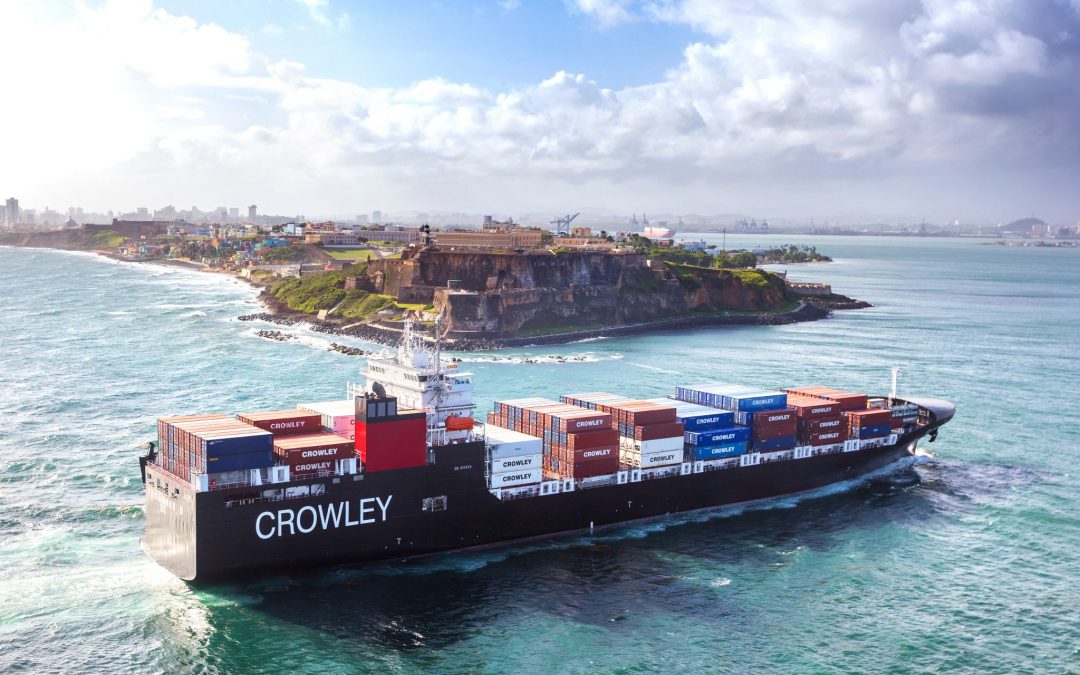U.S.-based Crowley has released its inaugural sustainability report establishing a reference point to measure progress towards its environmental, social and governance (ESG) goals.
Crowley has committed to using a “science-based approach” to achieving net-zero greenhouse gas emissions across its business by 2050, keeping the company in-line with the Paris Agreement goal of limiting global warming to 1.5 degrees Celsius above pre-industrial levels by mid-century.
To acheive that level of ambition, it will need to reduce greenhouse gas emissions across its entire business by more than 3.7 million metric tons per year, according to the report.
Crowley began inventorying its carbon emissions in 2020 to serve as the baseline for its emissions-reduction strategy. In 2021, it became the first U.S.-based maritime company to partner with Salesforce to use Net Zero Cloud to measure and analyze carbon emissions across its entire full value chain.
Crowley’s sustainability report, its first since making its net-zero commitment, shows the company’s overall greenhouse gas emissions (incl. scope 1, 2, and 3 emissions) increased from 3.7 million tons of CO2 in 2020 to almost 3.9 million tons in 2021.
“The needs of our planet and people are changing, and alongside our partners, we are working each day with customers to reduce the environmental footprint of their supply chain utilizing ocean transport, which continues to be the greenest way to transport goods,” said Tom Crowley, chairman and CEO. “We are proud of our accomplishments and initiatives captured in this first report, which will serve as the baseline against which we will measure our evolution for years to come. Our commitments are deliberately ambitious, and we are establishing partnerships and standards to ensure success – matching our commitments with measurable action and year-over-year progress.”
Crowley says priority areas of its ESG strategy include adopting low- to zero-carbon fuels, such as LNG vessels and infrastructure, and supporting new energy development, including offshore wind and battery power; increasing talent diversity, growth and retention; and supporting people and communities.
Crowley’s report highlighted its investment in liquified natural gas (LNG) as a reliable and lower-emissions alternative to traditional fuels, having delivered 40 million gallons of LNG to support Puerto Rico and invested in infrastructure on the island to enhance LNG availability. It is also working towards the advancement of alternative power, including serving the offshore wind industry through its New Energy division and its development of the fully electric, battery-powered tugboat eWolf—the first of its kind in the U.S. Crowley has also entered into a public-private partnership to develop an offshore wind services terminal in Salem, Massachusetts and is developing strategies to support more resilient supply chains, including using near-shoring and “blue water highways” to serve communities.
Crowley further listed activating of the employee-led Inclusion, Diversity and Equity in Action (IDEA) Council to drive a supportive and inclusive work environment; nearly $200,000 donated by employees to local organizations through the Crowley Cares Foundation and more than 530 volunteer hours completed by team members in the first six months of the program; and an endowment of $2.5 million to the University of North Florida for a new center of excellence that will grow a talent pipeline of leaders trained in transportation and logistics, including state-of-the-art data analytics and supply chain tools.
“We see tremendous opportunity to build a more sustainable maritime and logistics industry that makes not only the global supply chain, but also our world, more resilient,” said Crowley’s Alisa Praskovich, vice president of sustainability. “We have made progress over the last year to understand our impacts and set ambitious ESG goals, and are prepared to help lead our customers, and our industry, toward a lower-carbon future for all.”
Source: gCaptain





